Affordable Home Decor Ideas That Will Transform Your Space

Contents
Introduction
Creating a home that feels fresh, stylish, and uniquely yours doesn’t require a luxury budget—in fact, the biggest myth about home decor is that “nice” has to mean “expensive.” A 2024 survey by HomeGoods revealed that 78% of homeowners crave updates to their living spaces, yet cost remains their top barrier. But transformative design isn’t about splurging on brand-name pieces; it’s about strategic creativity. With intentional planning, resourcefulness, and a little effort, you can elevate every room without draining your wallet. This guide breaks down 10 proven, budget-friendly strategies that blend practicality with personality, proving that great design is accessible to everyone—regardless of how much you can spend.
Overview
The 10 strategies below work together to maximize visual impact while minimizing cost. They start with foundational steps (planning, decluttering) to set the stage, then move into actionable tactics (second-hand shopping, DIY projects) to add style, and finish with details (lighting, textures) that make a space feel cohesive. Whether you’re sprucing up a single corner or reimagining your entire home, these methods prioritize intention over expense. Every choice—from a thrifted vase to a DIY wall hanging—serves both style and function, ensuring your space feels purposeful and personal.
1. Start with a Plan
Rushing into decor purchases often leads to wasted money on items that clash, don’t fit, or serve no real purpose. A clear plan keeps you focused and ensures every dollar counts.
Assess Your Space Objectively
Walk through each room with a critical eye and a notebook. Ask specific questions: Does the living room sofa block the window? Is the bedroom lighting too harsh for reading? Are there unused corners that could become a cozy nook? Create a simple checklist to rate each area (1 = needs urgent updates, 5 = works well). For example, a dimly lit kitchen might score a 2, while a well-organized home office scores a 4. This checklist helps you identify priorities, so you don’t waste money on low-impact fixes.
Prioritize Key Areas
Focus on high-traffic zones first—they make the biggest first impression and get the most use. High-traffic areas include the living room, entryway, kitchen, and primary bedroom. For example, a cluttered entryway (where you and guests step in daily) might feel more urgent than a rarely used guest room closet. Low-traffic areas (like a basement or spare bathroom) can wait until you’ve tackled the spaces you interact with daily.
Create a Mood Board with Purpose
A mood board isn’t just for inspiration—it’s a tool to avoid impulse buys. Use Pinterest, Instagram, or physical scrapbooks to curate images, but go beyond photos: add fabric swatches from old clothes, paint chips from the hardware store, and notes on textures (“soft linen,” “rough jute”) or colors (“warm neutrals,” “pop of terracotta”). For extra focus, mark which elements fit your budget (e.g., “thrifted wooden table” vs. “$200 new lamp”). This ensures consistency and prevents you from buying something “cute” that doesn’t align with your overall vision.
2. Declutter First
A cluttered space can make even the nicest decor feel invisible. Clearing the chaos is free, instant, and creates a blank canvas for meaningful updates.
The KonMari Method Simplified
Marie Kondo’s famous decluttering method works because it focuses on joy and purpose—not just “tidying.” Sort items by category (clothing, books, decor) instead of room (this avoids moving clutter from one closet to another). For each item, ask: “Does this spark joy, or does it serve a practical purpose?” If the answer is no, donate, sell, or recycle it. For example, a chipped mug you never use? Let it go. A vintage necklace you love but rarely wear? Keep it (and display it as decor!).
Sorting Categories for Efficiency
To avoid overwhelm, break decluttering into three clear piles:
- Keep: Items you use weekly (e.g., your morning coffee mug) or love deeply (e.g., a hand-me-down blanket).
- Store: Seasonal items (e.g., holiday lights, winter throws) in labeled bins. Store them in out-of-the-way spots like closets or under beds.
- Let go: Duplicates (5 identical water bottles), broken items (a lamp with a frayed cord), or decor that no longer fits your style (that neon poster from college). Donate gently used items to thrift stores, sell them on Facebook Marketplace, or recycle what’s beyond repair.
Maintaining Clutter-Free Zones
After decluttering, assign a “home” to every item: keys go on a tray by the door, remote controls in a small basket, and mail in a wall-mounted organizer. Spend 10 minutes daily resetting these zones—for example, clearing the kitchen counter before bed or tucking throw pillows back onto the sofa. This small habit prevents clutter from creeping back.
3. Shop Second-Hand
Second-hand shopping turns “old” into “one-of-a-kind” while slashing costs. From vintage finds to barely-used pieces, these sources are goldmines for unique, affordable decor.
Best Spots to Hunt for Treasures
- Thrift stores (Goodwill, Salvation Army): Visit weekly—stock turns over fast! Look for solid wood furniture (dressers, chairs) with sturdy frames (wobbly legs are easy to fix), ceramic vases, and framed art (you can always swap the print).
- Facebook Marketplace/Craigslist: Filter by “free” or “50 and under” for local steals. Examples: a mid-century chair with a scratch (cover it with a slipcover), a glass coffee table with a chip (hide it with a tablecloth), or a set of wooden bowls for 10.
- Flea markets and garage sales: Flea markets often have curated vintage items (think brass candleholders or retro wall clocks), while garage sales are great for bargain furniture. Go late in the day for negotiating leverage: “Would you take $15 for this mirror? I can carry it now.”
What to Look for (and What to Avoid)
- Buy: Sturdy furniture (check for wobble-free legs by lifting each corner), glassware (minor scratches are hidden by water or flowers), and art (frames can be repainted or swapped). Vintage linens (tablecloths, curtains) are also great—they add texture for a fraction of the cost of new.
- Avoid: Mattresses (hygiene risks), electronics with frayed cords (safety hazard), or items with irreparable water damage (stains on wood that won’t sand out). If a piece needs more than a coat of paint or new hardware to work, it’s probably not worth the hassle.
Upcycling Basics for Second-Hand Finds
A $10 wooden dresser can become a statement piece with simple upgrades:
- Sand it lightly, then paint with chalk paint in a soft pastel (mint, blush) for a modern look.
- Swap old knobs for $5 brass ones from the dollar store—suddenly, it feels brand-new.
- For a thrifted side table with a scuffed top, cover it with contact paper (marble or wood patterns work great) for an instant refresh.
4. DIY Where You Can
DIY projects add personal flair and save money—even if you’re new to crafting. The key is to start small and pick projects that match your skill level.
Beginner-Friendly DIY Projects
These require minimal tools and no prior experience:
- Fabric-covered throw pillows: Buy 1 yard of clearance fabric (3–5) and sew simple envelope-style covers (no sewing machine? Use fabric glue!). For extra texture, add fringe or pom-poms from the craft store.
- Jar lanterns: Paint mason jars with frosted glass spray ($4) for a soft glow, then add tea lights. Hang them from a string in the backyard or place them on a shelf.
- Custom wall art: Cut geometric shapes (triangles, circles) from colored construction paper and arrange them in a pattern on a thrifted frame.
Intermediate Projects for More Confidence
If you’re comfortable with basic tools (scissors, sandpaper), try these:
- Pallet coffee table: Ask local stores (grocery, hardware) for free wooden pallets (they often discard them). Sand the slats to remove splinters, seal with polyurethane for durability, and add casters (8 for a set) to make it mobile. Stain it dark or paint it white—either way, it’s a functional centerpiece for under 20.
- Macramé wall hanging: Use $2 worth of cotton cord from the craft store and follow free YouTube tutorials to make a boho-inspired piece. Hang it above a bed or sofa for instant texture.
Sourcing Affordable DIY Materials
You don’t need a craft store budget to create—look for materials in unexpected places:
- Discount stores (Dollar Tree, 5 Below): Grab paintbrushes, poster board, and craft glue for under $1 each.
- Fabric remnants: Fabric stores sell leftover pieces for 1–3 per yard—perfect for small projects like pillow covers or table runners.
- Recycling bin: Old magazines make colorful decoupage material for trays or boxes; wine corks (collected from friends) can be glued into coasters; and empty toilet paper rolls, painted and stacked, become quirky pencil holders.
5. Use Paint to Transform
Paint is the most cost-effective decor tool—$20 can redo a wall, a piece of furniture, or even a set of shelves. It’s also easy to change if you get bored!
Choosing the Right Paint for the Job
- Walls: Matte or eggshell finishes hide imperfections (great for older homes); satin works for high-moisture areas (bathrooms, kitchens) because it’s easy to wipe clean.
- Furniture: Chalk paint (no sanding needed!) is ideal for wood or metal; latex paint with a primer (try Zinsser BIN) works for high-use items (dressers, tables) that need durability.
- Accent pieces: Spray paint (metallic gold, matte black) transforms old hardware, vases, or picture frames in minutes.
Accent Wall Techniques
An accent wall adds depth without painting the entire room:
- Ombre: Blend two shades of the same color (e.g., soft pink to magenta) for a subtle gradient. Start with the lighter shade at the bottom, then mix in small amounts of the darker shade as you move up.
- Stripes: Use painter’s tape to create vertical stripes—thicker stripes (4–6 inches) make ceilings feel taller, while thinner ones add subtle pattern. Choose two shades of the same color (e.g., cream and taupe) for a cohesive look.
- Stenciled patterns: Buy a $5 stencil (geometric, floral) and use a foam roller to add repeating designs. Try it on a small wall (like behind a bed) for a custom touch.
Furniture Painting Pro Tips
- Sand wooden pieces lightly with 120-grit sandpaper first—this helps paint adhere better.
- Use a foam roller for smooth, streak-free finishes on dressers or tables (brushes can leave visible marks).
- Add character with dry brushing: Dip a brush in paint, wipe most of it off on a rag, then lightly drag it across the surface. This creates a “distressed” look that hides imperfections.
6. Rearrange Your Furniture
A new layout can make a room feel brand-new—no cost required. It’s all about maximizing space and creating flow.
Assess Traffic Flow First
Ensure pathways are clear (at least 30 inches wide) so people can move easily. For example:
- Don’t block doorways with couches or chairs.
- Leave space between the coffee table and sofa to walk (18–24 inches is ideal).
- In the bedroom, make sure you can open dresser drawers and walk around the bed without bumping into walls.
Focal Points: Anchor Your Layout
Arrange furniture around a natural focal point—a fireplace, large window, or bold piece of art. If there’s no natural focal point, create one:
- Hang a large mirror or DIY wall hanging on a blank wall.
- Position a bookshelf (filled with decor and books) to draw the eye.
- This creates visual harmony and makes the room feel intentional.
Small Space Layout Hacks
In tight rooms, every inch counts:
- Push furniture against walls to open up floor space (ideal for studios or small living rooms).
- Use a small desk as a console table behind a sofa—it doubles as a workspace when needed.
- Angle two chairs toward each other (with a small side table in between) to encourage conversation without taking up too much space.
- Mount shelves above desks or sofas to free up floor space for decor or storage.
7. Add Greenery
Plants add life, color, and even improve air quality—all for under $10. The key is to choose low-maintenance varieties that thrive in your space.
Best Low-Maintenance Plants for Beginners
These require minimal watering and tolerate forgetful care:
- Snake Plant: Thrives in low light (perfect for basements or offices) and needs water once a month. Its tall, sleek leaves add height to shelves.
- ZZ Plant: Tolerates dry air and irregular watering—great for busy schedules. Its glossy, dark green leaves add a modern touch.
- Succulents: Small, affordable (2–5), and available in quirky shapes (panda plant, echeveria). They need bright light but only a splash of water every 2 weeks.
Creative Planters on a Budget
You don’t need expensive pots—repurpose everyday items:
- Tin cans: Paint them with acrylic paint (pastels work well) and drill small drainage holes in the bottom.
- Teacups or mugs: Use chipped ones (too pretty to throw away!) for small succulents—no drainage holes needed if you add gravel at the bottom.
- DIY hanging planters: Cut a plastic bottle in half, paint it, and punch holes in the sides to thread a string. Hang it near a window for trailing plants like pothos.
Caring for Your Green Friends Easily
Keep plants healthy without the hassle:
- Use ice cubes to water succulents (the slow melt prevents overwatering).
- Group plants with similar light needs: Put all sun-lovers (succulents, cacti) by a south-facing window, and shade-tolerant ones (snake plant, fern) in a north-facing room.
- Wipe dust off leaves with a damp cloth—this helps them absorb light better and looks cleaner.
8. Focus on Lighting
Poor lighting can make even a well-decorated room feel dull. Updating fixtures or adding layers of light is surprisingly affordable and instantly changes the mood.
Layer Lighting for Ambiance
Good lighting has three layers—mix them to create depth:
- Ambient: Overhead lights (ceiling fixtures, flush mounts) provide general brightness. Swap old bulbs for LED ones (they use less energy and last longer).
- Task: Desk lamps, under-cabinet lights, or floor lamps directed at reading nooks. Thrift stores often have 5 lamps—just swap the shade for a 3 linen one from a discount store.
- Accent: String lights (draped above a bed or behind bookshelves) add warmth; small table lamps on side tables create cozy corners.
Affordable Lighting Sources
You don’t need to buy new fixtures:
- Thrift stores: Look for brass or ceramic lamps—even if the base is outdated, a new shade (5) can transform it. Vintage glass pendants (often 10–$15) work great in kitchens.
- Facebook Marketplace: People often sell chandeliers or wall sconces for 10–15 (clean them with glass cleaner and replace bulbs for a fresh look).
- Discount stores: Target’s clearance section often has string lights (3) or battery-operated candles (2) for easy ambiance.
DIY Lighting Upgrades
Transform basic fixtures with these quick projects:
- Cover a plain lamp shade with burlap or lace (glue it on) for texture.
- Turn a mason jar into a pendant light: Add a $2 light kit from the hardware store (screw it into the jar lid), then hang it from the ceiling with a chain.
- Wrap string lights around a thrifted frame (remove the glass) for a glowing wall piece.
9. Layer Textures
Mixing textures adds depth and coziness—without spending much. The goal is to balance soft, hard, smooth, and rough elements for visual interest.
Textures That Work Together
Pairing contrasting textures creates harmony:
- Soft + Hard: A knit throw blanket draped over a leather chair; fuzzy sheepskin pillows on a sleek metal bench.
- Smooth + Rough: Linen curtains (smooth) with a jute rug (rough); a glass vase (smooth) filled with dried wheat (rough).
- Shiny + Matte: A brass candleholder (shiny) on a matte wooden shelf; a glossy ceramic bowl (shiny) next to a matte stone coaster.
Budget-Friendly Textile Sources
Textiles are easy to swap and add instant texture:
- Thrift stores: Wool blankets (wash them in hot water to “felt” and soften) or silk scarves (frame them as art for a luxe look).
- Clearance racks: Target or H&M often have throw pillows (5–10) in velvet, faux fur, or cable knit—grab 2–3 in complementary colors.
- DIY: Old t-shirts (cut into strips) can be braided into a rug; fabric scraps can be sewn into a patchwork table runner.
Layering Techniques for Depth
Small touches make a big difference:
- Rugs: Place a small, patterned rug (4×6 ft.) over a larger, neutral one (8×10 ft. beige or gray). This adds color without buying an expensive large rug.
- Pillows: Mix sizes (18-inch squares + 20-inch rectangles) and shapes (square + lumbar) for variety. Stick to 2–3 colors to avoid chaos.
- Bedding: Layer a lightweight quilt over a fitted sheet, then add a knit throw at the foot of the bed. Fold a blanket (textured, like chunky cable) over the edge of the mattress for a lived-in look.
10. Personalise with Accessories
Accessories tell your story—family photos, travel souvenirs, or handmade items make a space feel “you.” The key is to curate, not clutter.
Curate Meaningful Collections
Display items that have personal significance:
- Travel souvenirs: Frame vintage postcards from trips in a grid (use thrifted frames painted the same color). Stack small magnets from different cities on the fridge.
- Hobbies: If you knit, display a half-finished project in a basket; if you collect vinyl, stack a few favorite records next to your turntable.
- Group similar items: Cluster 3–5 objects (ceramic bowls, vintage cameras, or glass jars) on a shelf. Odd numbers look more intentional than even ones.
DIY Personalised Art
Create pieces that no one else has:
- Family photos: Scan old snapshots and print them on canvas (use a $5 coupon from sites like CanvasDiscount). Hang them in mismatched frames for a casual vibe.
- Abstract art: Use leftover house paint to create a bold canvas—drip, splatter, or brush on colors that match your room. No artistic skill required!
- Quote prints: Type a favorite quote (e.g., “Home is where the heart is”) in a fun font, print it on cardstock, and frame it.
Rotating Accessories for Freshness
Keep your space feeling new without buying more stuff:
- Swap seasonal items: Use seashells and driftwood in summer; pinecones and cinnamon sticks in fall.
- Rearrange shelves monthly: Move books to different spots, swap art between rooms, or rotate which photos are on display.
- Repurpose items: A vintage teacup used as a pencil holder in spring can hold small succulents in summer.
Conclusion
Transforming your home on a budget isn’t about cutting corners—it’s about making intentional choices that reflect your style and needs. By starting with a plan, decluttering, and leaning into second-hand finds and DIY projects, you create a foundation for a space that feels purposeful. Adding details like paint, plants, and personal accessories turns that foundation into a home that’s uniquely yours.
Remember, the goal isn’t perfection—it’s a space that makes you smile every time you walk in. With these strategies, that home is well within reach—no empty wallet required. Start small, be creative, and enjoy the process: every thrifted find, DIY project, and rearranged shelf brings you closer to a space you love.


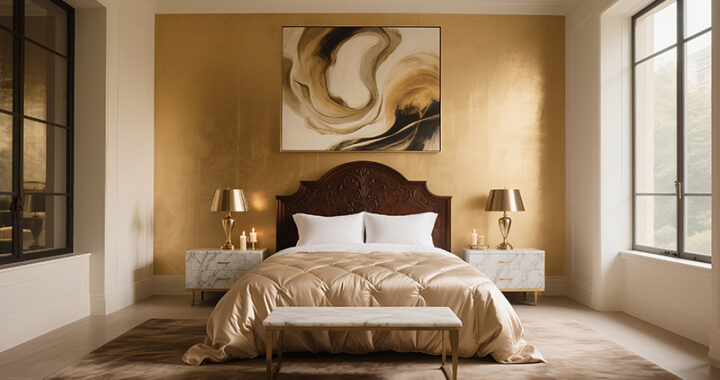 Home Decor Ideas to Make Your Home Feel Like a Luxury Hotel
Home Decor Ideas to Make Your Home Feel Like a Luxury Hotel 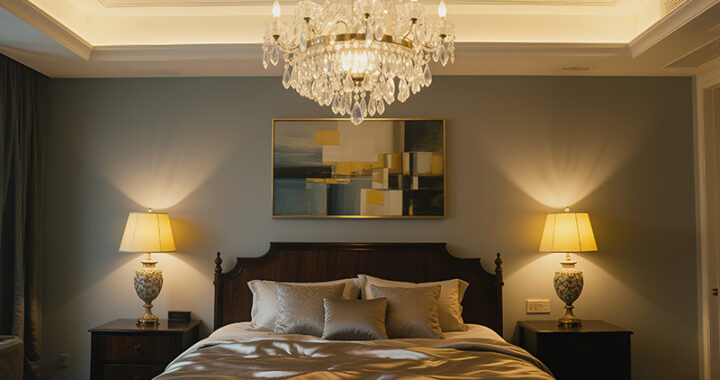 Best Luxury Accent Lighting for Every Room
Best Luxury Accent Lighting for Every Room 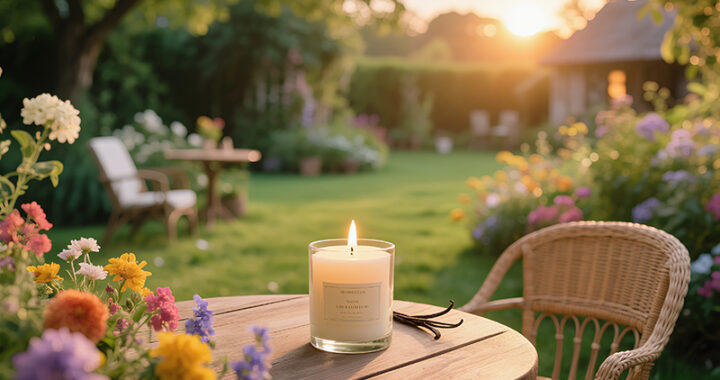 Best Luxury Candles for a Cozy and Elegant Home
Best Luxury Candles for a Cozy and Elegant Home 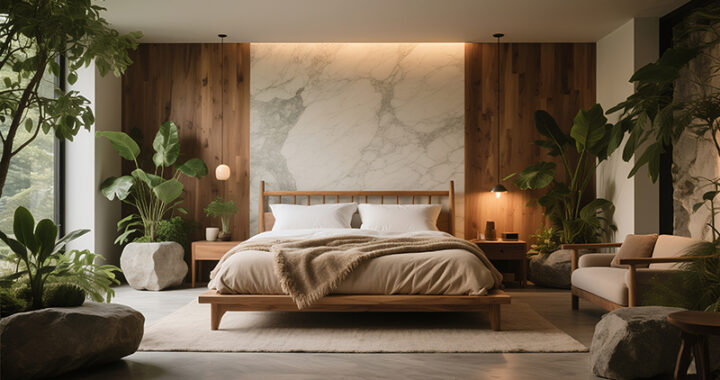 Best Luxury Bed Frames for a Stylish Bedroom
Best Luxury Bed Frames for a Stylish Bedroom 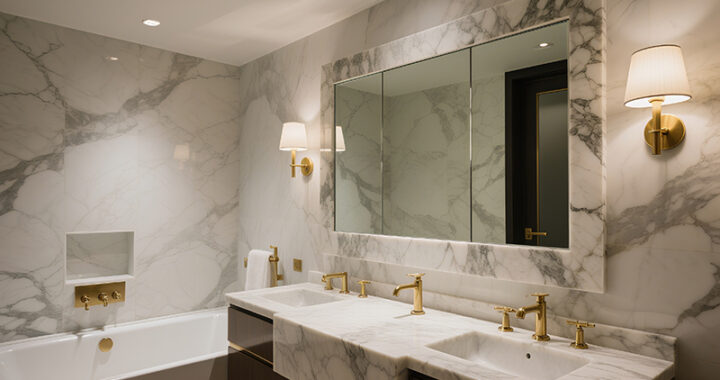 Best Luxury Bathroom Mirrors for a Stylish Touch
Best Luxury Bathroom Mirrors for a Stylish Touch 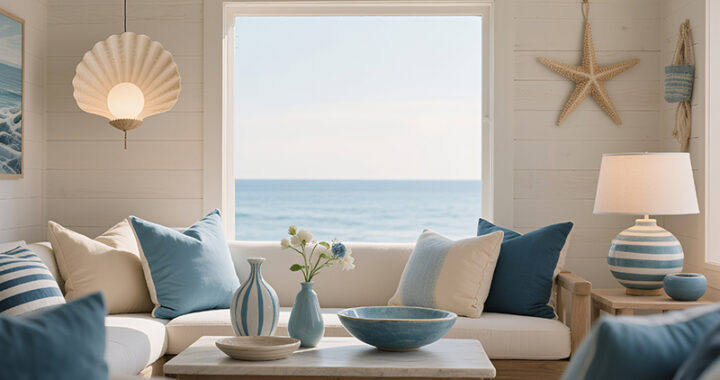 Luxury Coastal Home Decor Ideas: Elevate Your Beach House with Timeless Elegance
Luxury Coastal Home Decor Ideas: Elevate Your Beach House with Timeless Elegance